How To Draw A Person Bird's Eye View
Drawing the human figure is one of the most challenging, yet rewarding activities for an artist. The human figure is ever changing and no two body shapes are the same. This makes figure drawing a challenging skill that you can continue to develop over time.
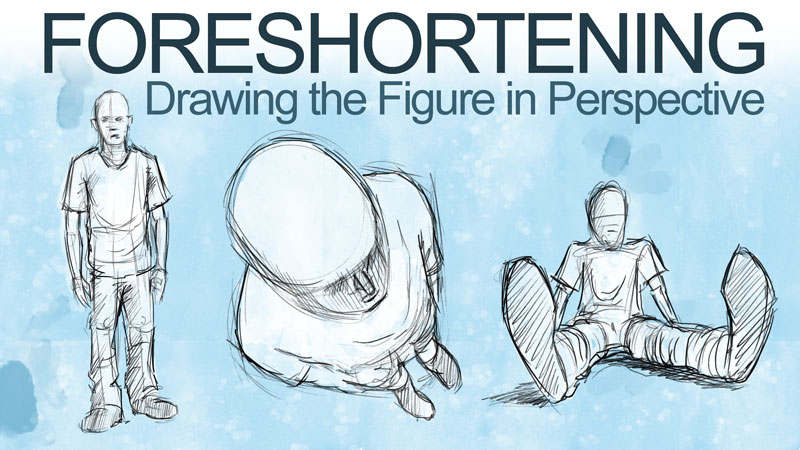
Any form of figure drawing requires the artist to closely observe the subject, leading to enhanced drawing skills. Drawing is all about seeing after all, and the stronger you are at understanding what you see, the better you become at drawing.
There is no true formula for drawing people. Because the human figure is so dynamic, a formula that fits every possible position simply doesn't exist. However, there is a step by step approach that can help you in the drawing process. I like to use a four step approach to figure drawing to help construct the form of the subject. Each step is an exercise of observation and making comparisons that leads to a more accurate drawing of the figure.
This approach works wonders when drawing the figure from a standard view, but when the figure is in perspective and foreshortening is a factor, the challenge is much greater. We have to pay special attention to what happens to standard proportions when we draw a figure from such an exaggerated point of view.
Drawing The Figure in Perspective
We're all probably familiar with linear perspective, a drawing method that utilizes lines to create the illusion of space on a flat, 2-D surface. There are three forms of linear perspective including one-point perspective, two-point perspective, and three-point perspective. Each form is selected and implemented by the artist based on the point of view of the viewer.

While linear perspective is mostly used for drawing buildings, trees, roads, etc. in a landscape, we can apply its principles to drawing the human figure in perspective.
Linear perspective helps the artist to better understand how we perceive objects in three-dimensional space and communicate that information in a drawing. It does this by structuring the distortion that happens when we draw objects in space.
What is Foreshortening?
Foreshortening refers to the distortion that happens when we draw the human figure in space, especially from an exaggerated, or extreme, point of view.
The figure can be placed in an indefinite number of positions and order to capture the figure in these specific types of poses, artists must be able to recognize and replicate the distortion that exists in a pose.
Foreshortening is simply what happens when the human figure is viewed in perspective.
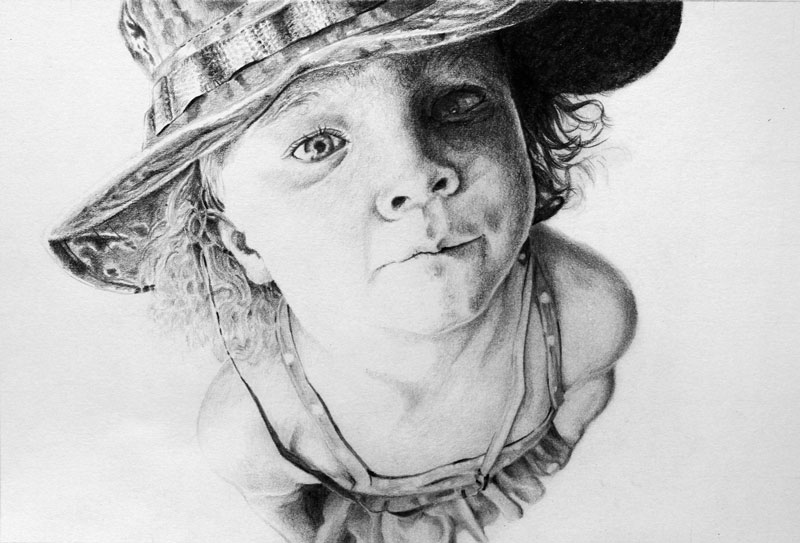
Image from "Graphite Portrait Series" (Recorded Live Lesson series)
Foreshortening happens in almost every natural human pose, but it is most noticeable in extreme "points-of view". These extreme points-of-view can be a "worm's eye view", looking up at the figure; or a "bird's eye view", looking down on the figure. There are other possible angles where foreshortening can occur as well.
Using The Four Step Approach for a Foreshortened Figure
Although the four step approach to drawing the figure (mentioned earlier) works great for drawing the figure from a standard view, it doesn't mean that we must abandon it completely when we approach the figure from an extreme angle.
In fact, we can still apply this approach as long as we understand the role that distortion plays in the lines that are drawn.

The first step is to visually measure the subject from the head to feet. Make a judgment about how long the subject is and draw a line on the surface to represent the length from the head to the feet. Depending on the posture, this line may be slightly curved.
Drawing this line will ensure that the entire figure will fit on the surface and it will help in planning the rest of the proportions of the figure. Notice how much shorter this line becomes when the figure is viewed from an extreme angle.
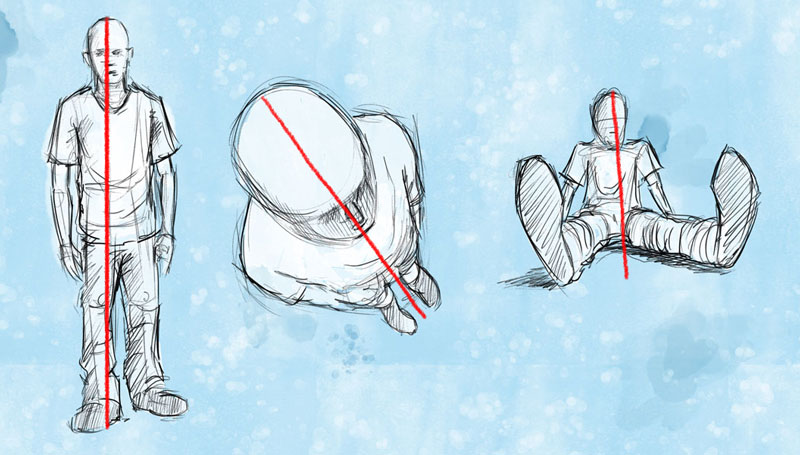
The next step is draw a line for the shoulders and the waist. Again, depending on the position of the figure, these lines may be slightly curved. The vantage point of the viewer will greatly impact the location of these lines, especially if the figure is foreshortened.
Notice how the line for the shoulders is much longer and the distance from the waist line to the feet is much shorter when the figure is viewed from above.
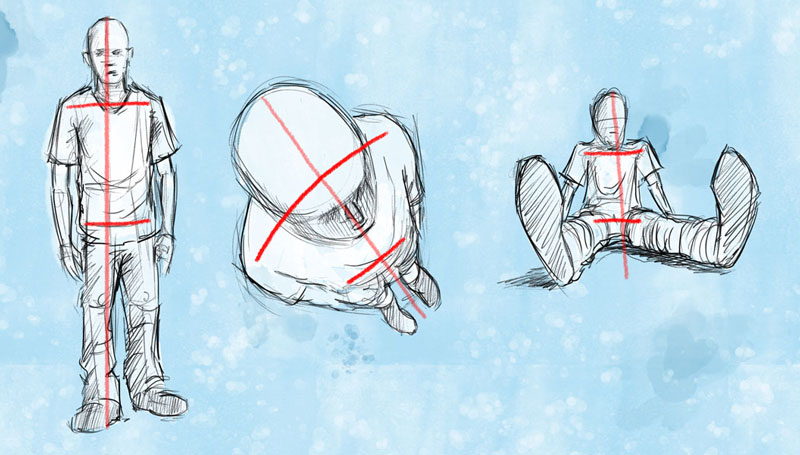
After the lines for the waist and shoulders are defined, the structure of the figure can be planned by drawing a stick figure. (Yes, you read that correctly.) Approach this step as if you are defining the bone structure of the figure.
Instead of drawing a line for the torso, a geometric shape is more appropriate. Geometric shapes can also be drawn for the hands and feet.
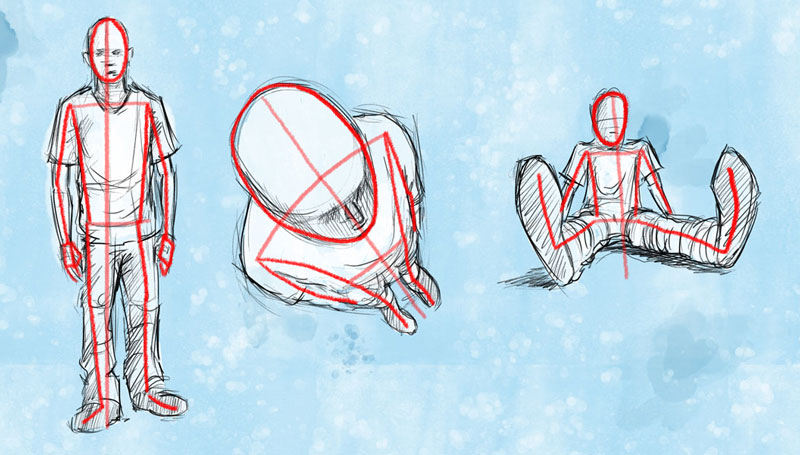
With the figure's basic proportions defined on the surface, the artist can "thicken things" up by drawing the contour lines of the figure with confidence. Details of the clothing, features, and props can be defined. The illusion of a light source can be attained through the addition of a range of value.
Summing It Up
Any form of figure drawing is challenging. Drawing the figure in a pose that creates distortion can be even more of a challenge. However, if we understand what we are seeing and how to create the required illusion on the drawing surface, we can be successful.
When the figure is in perspective, and foreshortening is a factor, it's all about distortion. The more extreme the angle and point of view, the greater the distortion. If we understand this and apply it to our figure drawings, then foreshortening is something that we can all master.
More Lessons You'll Love...
How To Draw A Person Bird's Eye View
Source: https://thevirtualinstructor.com/foreshortening.html
Posted by: pruittsonsen82.blogspot.com

0 Response to "How To Draw A Person Bird's Eye View"
Post a Comment